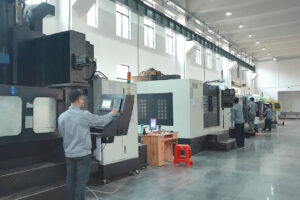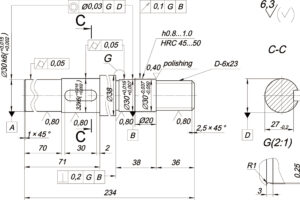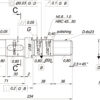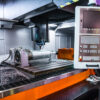What is the machining accuracy?
Machining accuracy is mainly used to produce products, and machining accuracy and machining error are used to evaluate the geometric parameters of the machined surface. The tolerance level measures the machining accuracy. The smaller the level value is, the higher the precision is; a numerical value represents the machining error, and the larger the numerical value is, the greater the error is. High machining accuracy means minor machining errors and vice versa.
There are 20 tolerance grades from IT01, IT0, IT1, IT2, IT3 to IT18. IT01 indicates the highest machining accuracy of the part, and IT18 means that the machining accuracy of the part is the lowest. Generally speaking, IT7 and IT8 have medium machining accuracy.
The actual parameters obtained by any machining method will not be accurate. From the function of the part, as long as the machining error is within the tolerance range required by the part drawing, we can consider that the machining accuracy is guaranteed.
What are the precision standards for CNC machining?
- Dimensional accuracy:The degree of conformity between the actual size of the processed part and the centre of the tolerance zone of the part size.
- Shape accuracy:This refers to the degree of conformity between the actual geometry of the surface of the machined part and the ideal geometry.
- Position accuracy:Refers to the actual position accuracy difference between the relevant surfaces of the parts after machining.
- Interrelationship:Usually, when designing machine parts and specifying the machining accuracy of parts, attention should be paid to controlling the shape error within the position tolerance, and the position error should be smaller than the dimensional tolerance. That is to say, for precision parts or critical surfaces of parts, the shape accuracy requirements should be higher than the position accuracy requirements, and the position accuracy requirements should be higher than the dimensional accuracy requirements.
The deviation of the actual geometric parameters of the part from the ideal geometric parameters is called the machining error. The size of the machining error reflects the level of machining accuracy. The larger the error, the lower the machining accuracy; the smaller the error, the higher the machining accuracy.
Do accuracy and precision mean the same thing?
Accuracy: Refers to the closeness of the obtained measurement result to the actual value. The measurement accuracy is high, meaning the systematic error is small. At this time, the average value of the measured data deviates less from the actual value, but the data is scattered; that is, the size of the accidental error is unclear.
Precision: refers to the reproducibility and consistency between the results obtained by repeating the determination using the same spare sample. It is possible to have high accuracy, but precision is inexact. For example, using a length of 1mm yields three results of 1.051mm, 1.053, and 1.052, which, while high precision, are inaccurate.
Accuracy means the correctness of the measurement results, and precision means the repeatability and reproducibility of the measurement results. Precision is the premise of accuracy.
What methods does Keyanng have to improve machining accuracy?
Make adjustments to the processing system
- Trial cutting method adjustment
We try to cut – measure the size – adjust the amount of the tool’s bite – pass cutting – try to cut again, and so on until the desired size is achieved. This method has low production efficiency and mainly uses single-piece small batch production.
- Adjustment method
We obtain the required dimensions by pre-adjusting the relative positions of the machine, fixture, workpiece and tool. This method has high productivity and is mainly used for mass production.
Reduce machine errors
- To improve the manufacturing accuracy of the spindle components, the rotation accuracy of the bearing should be improved:
1. Use high-precision rolling bearings;
2. Adopt high-precision multi-oil wedge dynamic bearing;
3. Adopt high-precision hydrostatic bearing
4. Improve the machining accuracy of box support holes and spindle journals;
5. Improve the machining accuracy of the mating surface with the bearing;
6. Measure and adjust the radial runout range of the corresponding parts to compensate or offset the errors.
- Appropriately preload the rolling bearing
1. Can eliminate gaps;
2. Increase bearing stiffness;
3. Average rolling element error.
- Reduce drive chain transmission errors
- The number of transmission parts is small, the transmission chain is short, and the transmission precision is high;
- The use of deceleration transmission is an important principle to ensure the transmission accuracy, and the closer the transmission pair is to the end, the smaller the transmission ratio should be;
- The precision of the end piece should be higher than that of other transmission parts.
Reduce tool wear
Keyanng’s work manual requires that the tool be replaced before the tool size wear reaches a stage of rapid wear. Although this may cause waste of the device, it can maximize the precision of the part.







